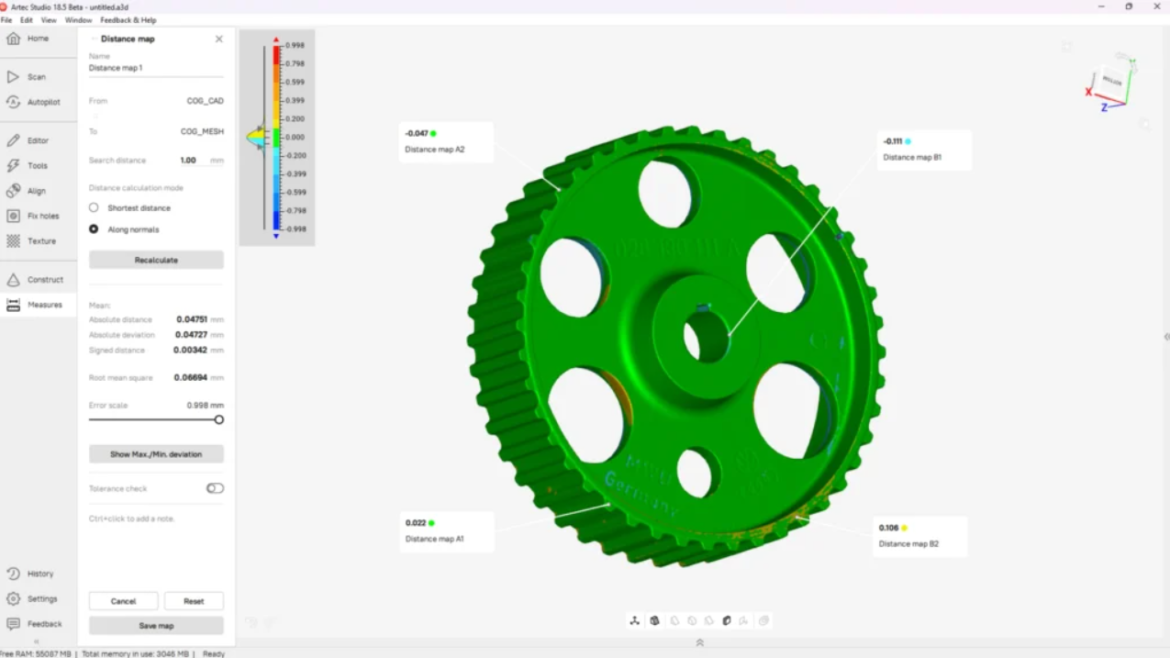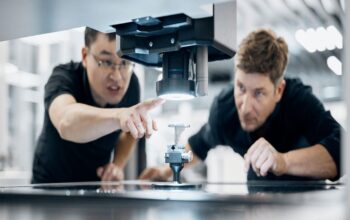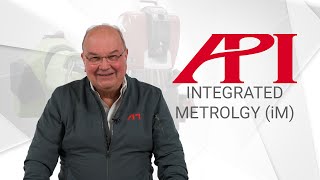The proliferation of 3D data has gradually transformed the entire industrial landscape so far in the 21st century, with virtually all sectors, from oil & gas to medical, relying on 3D images to help propel themselves into the next phases of their evolution. In this sense, all the industries most directly involved in collecting and leveraging 3D data are emerging into a network that will serve as one of the linchpins in the global economy’s future.
At the same time, as much as 3D imaging has already progressed in the last couple of decades, the most noteworthy aspect of the relevant technologies may be that they’re still quite early in their development. Artec 3D, for instance, one of the world’s leading suppliers of 3D scanners, recently released a product, the Artec Point, which represents the company’s proper entry into an entirely new market, industrial metrology.

Although all of Artec 3D’s scanners can be used to some extent for industrial metrology applications, the Artec Point is the company’s first scanner made specifically for that market. According to the company’s CEO, Artyom Yukhin, directly targeting the industrial metrology space opens up far more growth potential for Artec 3D than what’s possible in the 3D scanner market, alone:
“The metrology market is maybe ten times larger than all of our traditional markets,” said Yukhin. “And it’s not only big, it’s also competitive. We think we’re well-positioned to compete in that market because of the opportunity to bring our ecosystem — our algorithms and software, in addition to all our previous hardware releases — to industrial metrology applications. We’ve been preparing for a few years now to get here, by creating a metrology lab, integrating the scanner into our software, and finding the best available hardware manufacturers to execute our vision.”
Artec 3D already has a robust user-base, one which has just as much need for the quality control enabled by industrial metrology instruments as it does for the design freedom yielded by 3D scanners. Thus, the company’s full entry into industrial metrology isn’t a gamble to enter a brand new field: rather, it’s a way to allow existing Artec 3D customers to not have to leave the company’s fold for any of their 3D data needs. As Yukhin explained, the release of the Artec Point is a response to extensive feedback from the company’s customers and resellers:
“The typical conversation for the last two years with our reseller network has been, we need a metrology scanner,” Yukhin affirmed. “That’s the product our customers want, and they want to be able to use our software and our underlying tech for quality control. So this aligned nicely with the analysis from our business development division, which as I mentioned was already concluding that now is the time to step into the market. Even though, again, that market is quite competitive, a large reason for that, in our view, is the lack of differentiation between the products that were already available. We’re confident Artec 3D’s ecosystem can be a difference maker.”
Going back to the idea that all the 3D image technologies are part of an emerging industrial network, any progress that Artec 3D makes in the industrial metrology space could have a significant impact on the additive manufacturing (AM) industry’s ability to scale. More or less everyone in the AM industry knows that quality control of printed parts — characterization, qualification, standardization, etc. — is still probably the largest barrier to adoption.

For years, Artec 3D has already been helping AM users with quality control in the realm of design. If the company can now help users speed up and improve the process of ensuring that finished parts meet their required specifications, the whole AM industry could benefit. Given where the AM industry currently is in its long-term growth arc, Yukhin sees maintenance, repair, and operations (MRO) as the area where 3D scanning and AM present the most synergy:
“It’s maybe too much to say that AM and 3D scanning are twin brothers,” began Yukhin, “but they’re certainly close relatives. For one thing, when you’re producing parts layer-by-layer, the simple fact that each component of a part isn’t coming down a conveyor belt piece by piece means you can’t do quality inspection with the same instruments you’d use with conventional manufacturing, so 3D scanning is often the only possible method.
Additionally, since so much of the public funding for infrastructure that’s been allocated over the last several years is for repairs and replacement of often obsolete parts, 3D scanning allows maintenance workers on the ground to precisely capture images of the parts that need to be fixed and replaced. This is positive from a sustainability angle too: instead of replacing every part, you can repair all the parts where that’s a viable option. For the parts that you do need to replace, 3D scanning helps create digital inventories of those parts, which gives users the ability to produce on-demand only those parts that they actually need, as the need arises.
From the standpoint of attracting investment from strategic partners, both 3D scanning and 3D printing have a similar appeal, which is that they can help customers implement long-term cost-cutting initiatives. That’s especially important in the current business environment, since this is one of the only catalysts driving businesses to invest in new equipment.”
I would also add that, despite the increased familiarity of the public with 3D technologies, there’s still a certain wow factor that both 3D scanning and 3D printing evoke. While this is an admittedly intangible quality, it nonetheless shouldn’t be underestimated in terms of ability to sway potential new adopters.

For instance, back in April, Artec 3D announced a partnership with NGO Humanity & Inclusion to train medics on the ground in Rwanda to use the Artec Leo to scan patients, towards the end of creating custom medical devices. Using 3D scanners makes the project particularly useful for treating children, since the pace at which their bodies grow means they need replacements more quickly than older patients.
The wow factor here isn’t just about improving the quality of life for the patients who need it most. It’s also the fact that, relatively quickly, you can teach medical personnel to design and produce such indispensable components, putting the supply chain directly into the hands of the workers on the ground.
The more closely that 3D scanning, AM, and all the other related technologies intertwine with one another, the more opportunities there will be to put supply chains right in the hands of workers. As Artec 3D increases its footprint in the industrial metrology market, the ability to reliably use AM for increasingly complex applications should increase in parallel.








